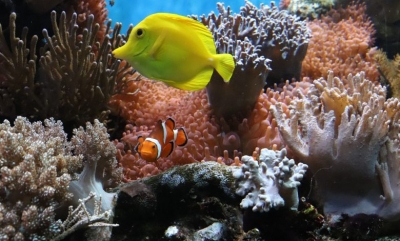
An organism’s appearance and body colour serve various purposes and they are strongly linked to the environment. In the marine environment, colouration is tied to how light penetrates ocean water and an animal’s ability to blend in with its surroundings. A new study has found that fish communities on the Great Barrier Reef in Australia may become less colourful as corals bleach. The researchers studied the reef health, coral types, and resident fish over three decades.
The Great Barrier Reef, the largest coral reef system on Earth, has been subject to frequent bleaching events due to global warming in the past few decades. Coral bleaching events profoundly change the make-up of the ecosystem. Researchers say the loss of corals is a likely factor in the disappearance of brightly-coloured fish in the GBR.
The study looked at the diversity of colours found in communities of reef fishes and related that to the types of habitats where those fishes live.
Fish communities in healthy parts of the reef with plentiful complex corals were compared to other areas where bleached corals dominate in the wake of major disturbances, such as heatwaves. The researchers found that as the cover of structurally complex corals increases on a reef, the range of colours present on fishes living and around them also increases. The diversity of fish colours declines in areas covered in dead, damaged corals. The bleached and dead corals probably provide less protection from predators for brightly-coloured fishes.
The researchers also found that the eye-catching yellow and green fishes, such as the lemon damselfish and green coral goby, have declined by about two-thirds, since the first recorded mass bleaching event of the reefs around Orpheus Island in 1998.
Picture Credit : Google




